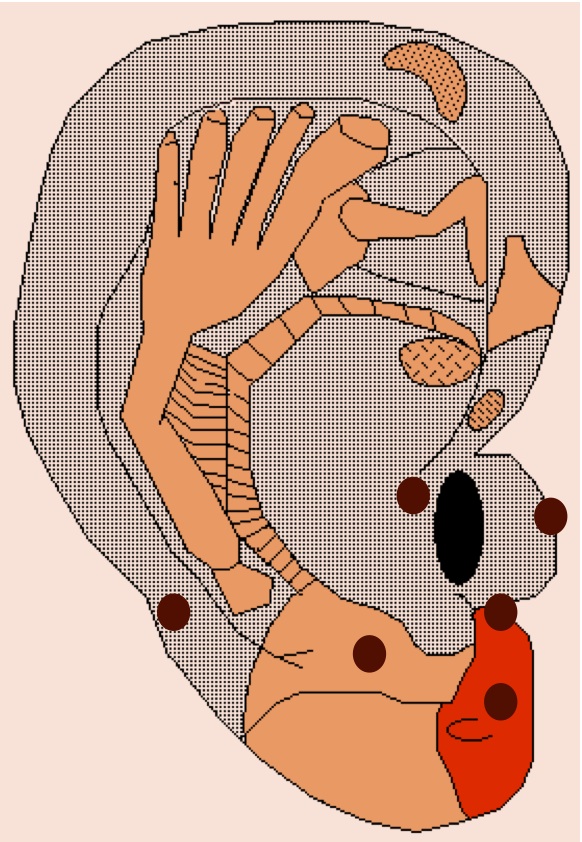Efficacy of Auricular Therapy for Pain Management : A Systematic Review and Meta-Analysis
Efficacy of Auricular Therapy for Pain Management : A Systematic Review and Meta-Analysis
Chao Hsing Yeh, 1 ,* Yi Chien Chiang, 2 Samuel L. Hoffman, 1 Zhan Liang, 1 Mary Lou Klem, 3 Wilson W. S. Tam, 4 Lung-Chang Chien, 5 and Lorna Kwai-Ping Suen 6
http://www.ncbi.nlm.nih.gov/pmc/articles/PMC4140110/
Abstract
Objective. The objective of this systematic review and meta-analysis was to assess the efficacy of auricular therapy by including a sham therapy control group. Methods. Relevant, randomized clinical trials (RCTs) were identified by searching medical related databases from, depending on journal, 1900 (at the earliest) to 1994 (at the latest) through May 2013. The outcome measure was a pain intensity score. Results. Twenty-two RCTs were identified and 13 RCTs were included for meta-analysis. In these studies, auricular therapy provided significant pain relief when compared to a sham or control group. The overall standardized mean differences (SMD) was 1.59 (95% CI [−2.36, −0.82]) (13 trials, total subject numbers = 806), indicating that, on average, the mean decrease in pain score for auricular therapy group was 1.59 standard deviations greater than the mean decrease for the sham control. In terms of the efficacy of the different treatment methods, auricular acupressure boasts the largest strength of evidence for pain relief, followed by auricular acupuncture. Electroacupuncture stimulation did not show significant evidence for efficacy, which may be due to the small sample size (i.e., only 19 subjects were included). Conclusion. Further large-scale RCTs are needed to determine the efficacy of auricular therapy for pain.
Among the 22 trials, auricular therapy methods included AA (n = 10), EAS (n = 4), and AP (n = 8). The type of pain included perioperative pain (n = 9), acute pain (n = 7), and chronic pain (n = 6). The treatment duration ranged from one treatment (AA) to weekly AA treatment for up to 6 weeks [24]. The most popular acupoints selected for treatment were corresponding points (n = 20), shenmen (n = 17), and subcortex (also called dermis) (n = 8).
 Points d’auriculothérapie / Auriculotherapy Points
Cartographie synthétique et évolutive
Points d’auriculothérapie / Auriculotherapy Points
Cartographie synthétique et évolutive
